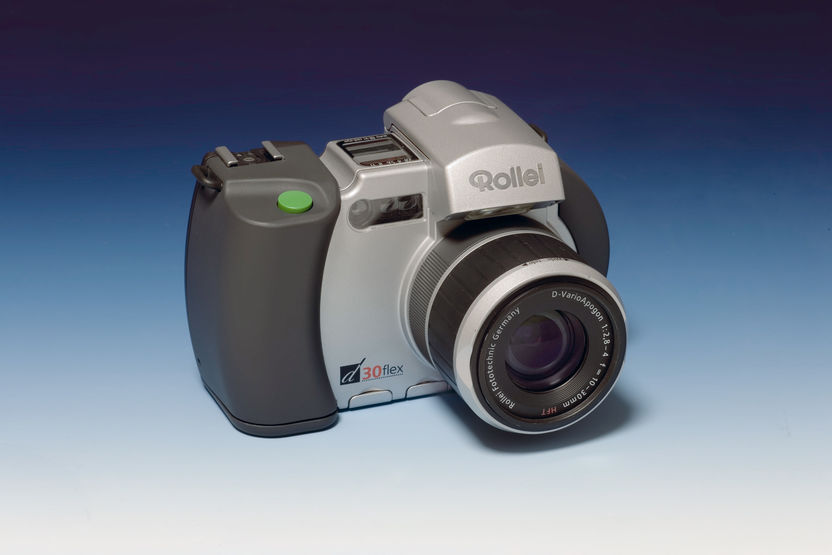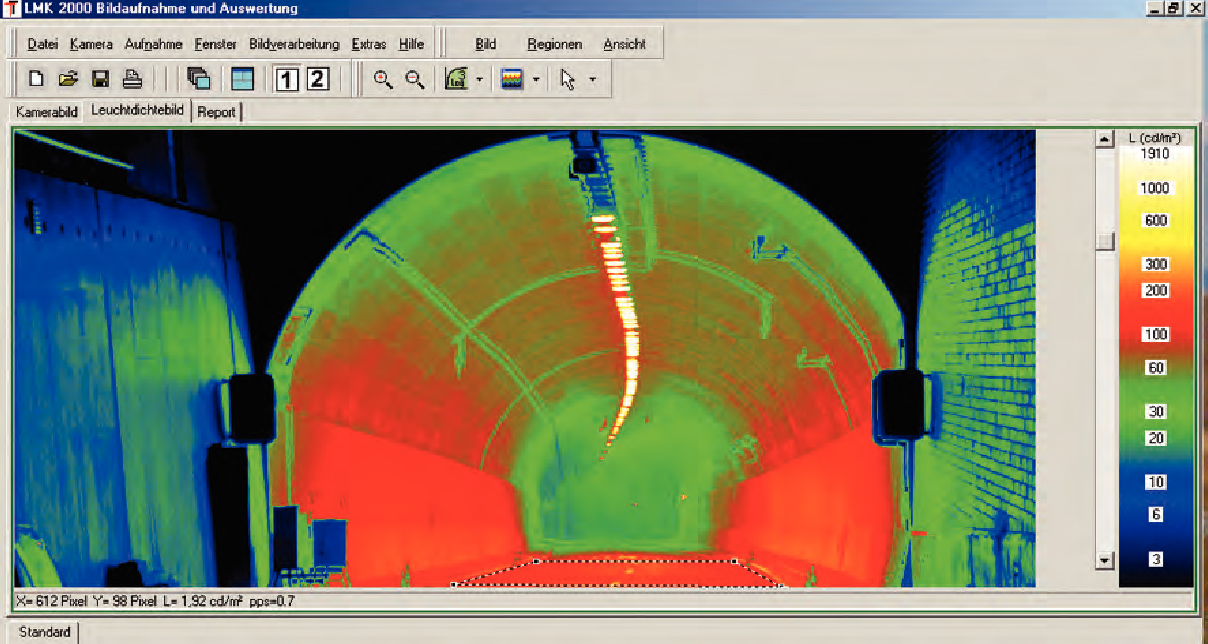
Figure 3.74: Luminance measuring camera
Postbox 1960
D-59753 Arnsberg

Figure 3.74: Luminance measuring camera
Important photometric parameters for indoor rooms are directly connected to the luminance of objects and their surrounding area, such as contrast or glare. The luminance of bright surfaces often highly depends on the direction of observation as well as viewing angle. Consequently, luminance measurements as point measurements and averages derived from them can only be executed using expensive measuring instruments and precise stands with goniometers. They are time-intensive and require a high level of expertise.
Image resolution luminance meters realise a depiction of the object space in the image plane of a measuring instrument similar to a digital camera (CCD camera). They also record the direction of observation. Using image resolution luminance cameras, it is possible to measure a multitude of punctual luminance values and thus luminance distributions or luminance images and geometric parameters in one measurement. Average luminance is determined using the punctual luminance values for relevant surfaces. The evaluation of the digital image is done using complex corresponding software. The results are documented on monitors or prints.
The measurements can be depicted graphically as a calibrated grey or false-colour image (pseudocolour), particularly using an "extended" scale for slight changes (gradients) in luminance values. Measurement graphics can also be rendered as isosurfaces or contour lines.
The rapid recording of a multitude of measuring points creates the conditions for efficient luminance measurements, e.g. in tunnels. It is particularly useful for saving time in measuring and evaluation.

Figure 3.75: Luminance measurement in a tunnel, depiction of luminance areas in false colour